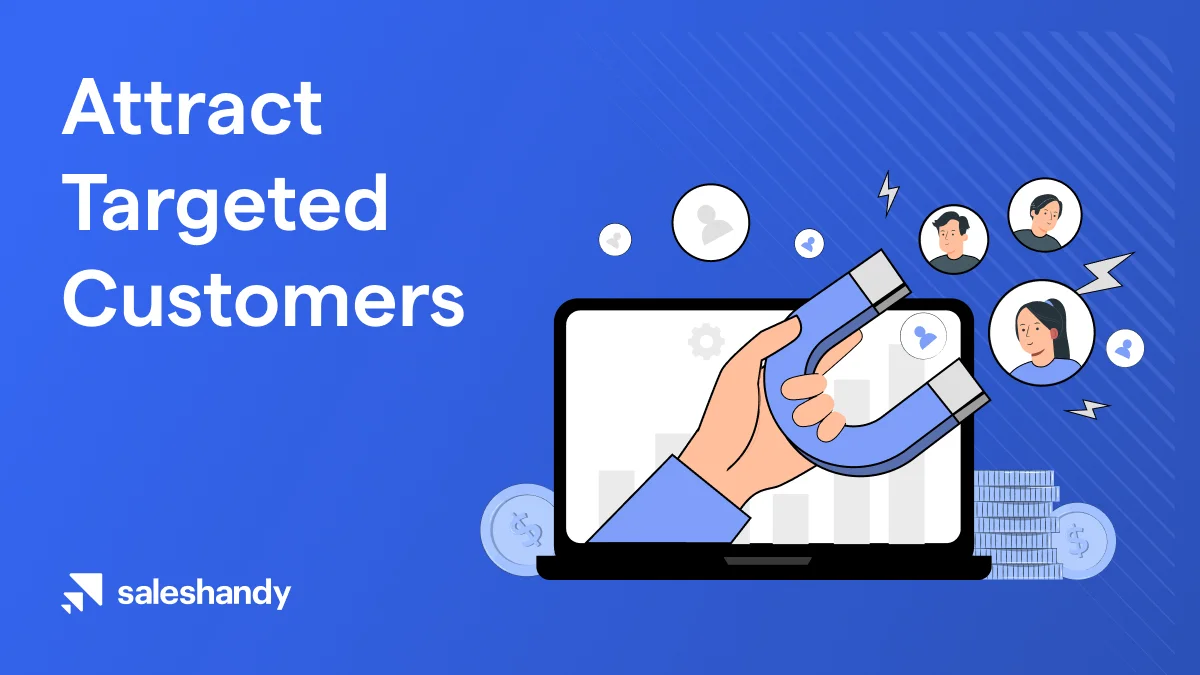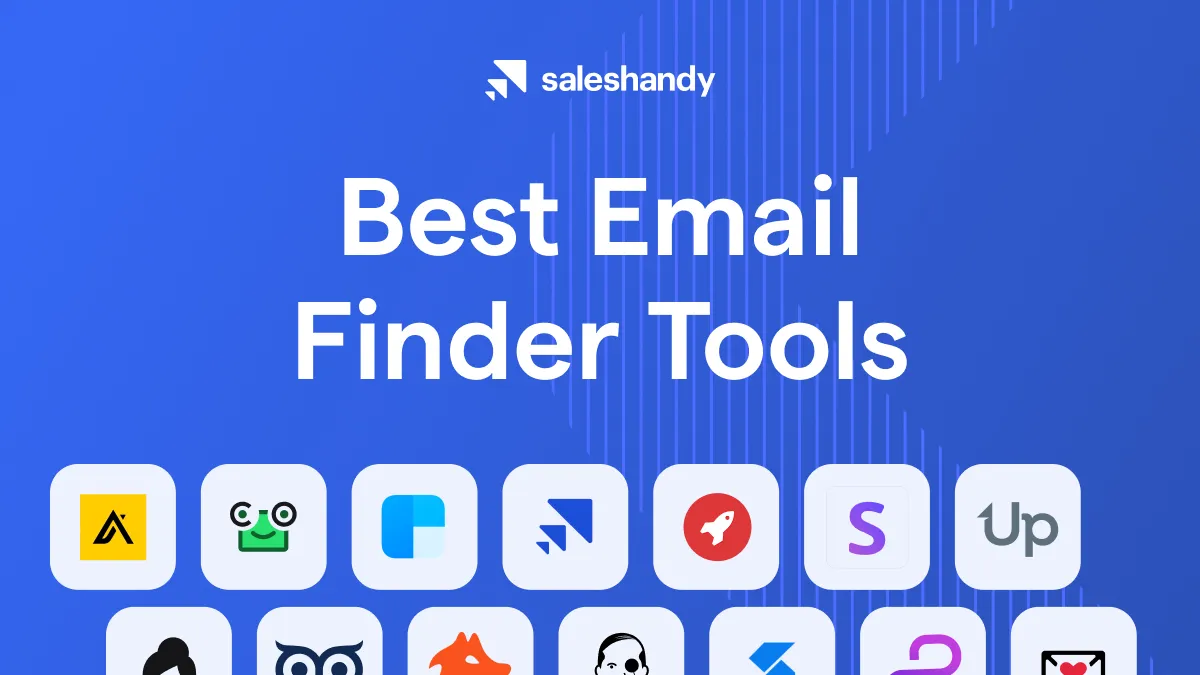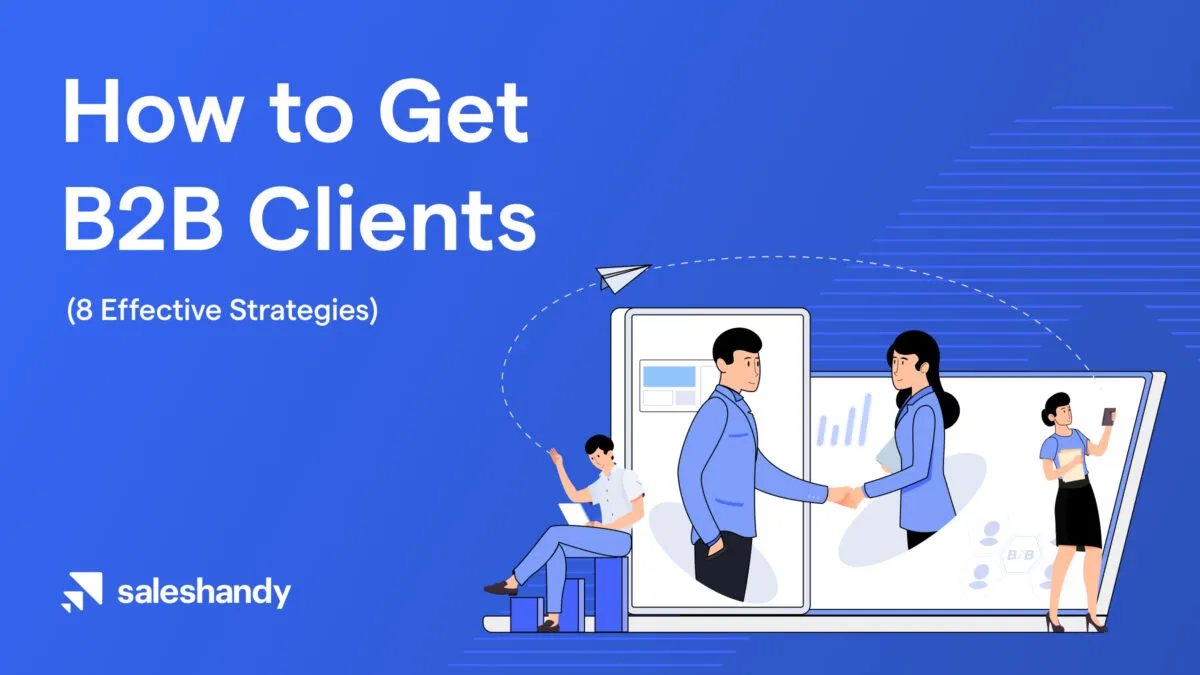Contents
As a software development company, lead generation is the most crucial aspect of your business.
To ensure reliable lead generation, it is necessary to tweak your outreach efforts that align with your business goals.
This requires formulating a strategy that produces relevant information tailored to the needs of your ideal customers.
With numerous lead generation strategies and tactics out there, it can be overwhelming for you to determine where to focus your efforts on.
But no worries! In this article, we will provide you with proven lead-generation strategies that will help you attract and convert high-quality leads for your software business.
Generate Leads for Software Development Companies – Table of Contents
- How to Generate Leads for Software Development Companies
- 5 Best Lead Generation Tools for Software Development Companies
- Conclusion
6 Step Framework to Generate Leads for Software Development Companies
Here is Saleshandy’s Targeted Lead Generation Framework (TLGF) that can help you turn your target prospects into qualified leads.

Step 1: Understanding your Target Audience
Step 2: Attracting the Prospects & Getting the Lead
Step 3: Lead Qualification
Step 4: Lead Nurturing
Step 5: Measuring and Analyzing Your Results
Step 6: Optimizing your Lead Generation Efforts
1) Understanding Your Target Audience
Understanding the target audience is crucial. Why? Tailoring your message that resonates better with potential customers increases the chances of higher conversion rates and customer satisfaction.
The first step to understanding your target audience better is to conduct market research. Here’s how:
Conducting market research to understand your target audience
The best way to identify your target audience is to conduct market research. As a result, you will be able to better understand the needs, preferences, and behaviors of your target audience. Survey your existing customers, review your industry reports, and identify industry & marketing trends that pertain to your business & audience.
Once you have this data, refine your target audience based on the insights gained this will allow you to develop a more precise understanding of your target audience and develop an effective ideal customer profile out of it. Let’s see how.
Creating Your Ideal Customer Profile
By now, you likely have a general understanding of your customers. After conducting research and analysis, it’s time to compile your findings.
Based on what you’ve gathered, create a list of key customer characteristics you’d like to see in your ideal customer. This can be thought of as a behavioral profile.
An Ideal Customer Profile (ICP) contains details of the individuals in a company who would benefit the most from your product or service.
It identifies the most valuable prospects and customers who are most likely to make a purchase.
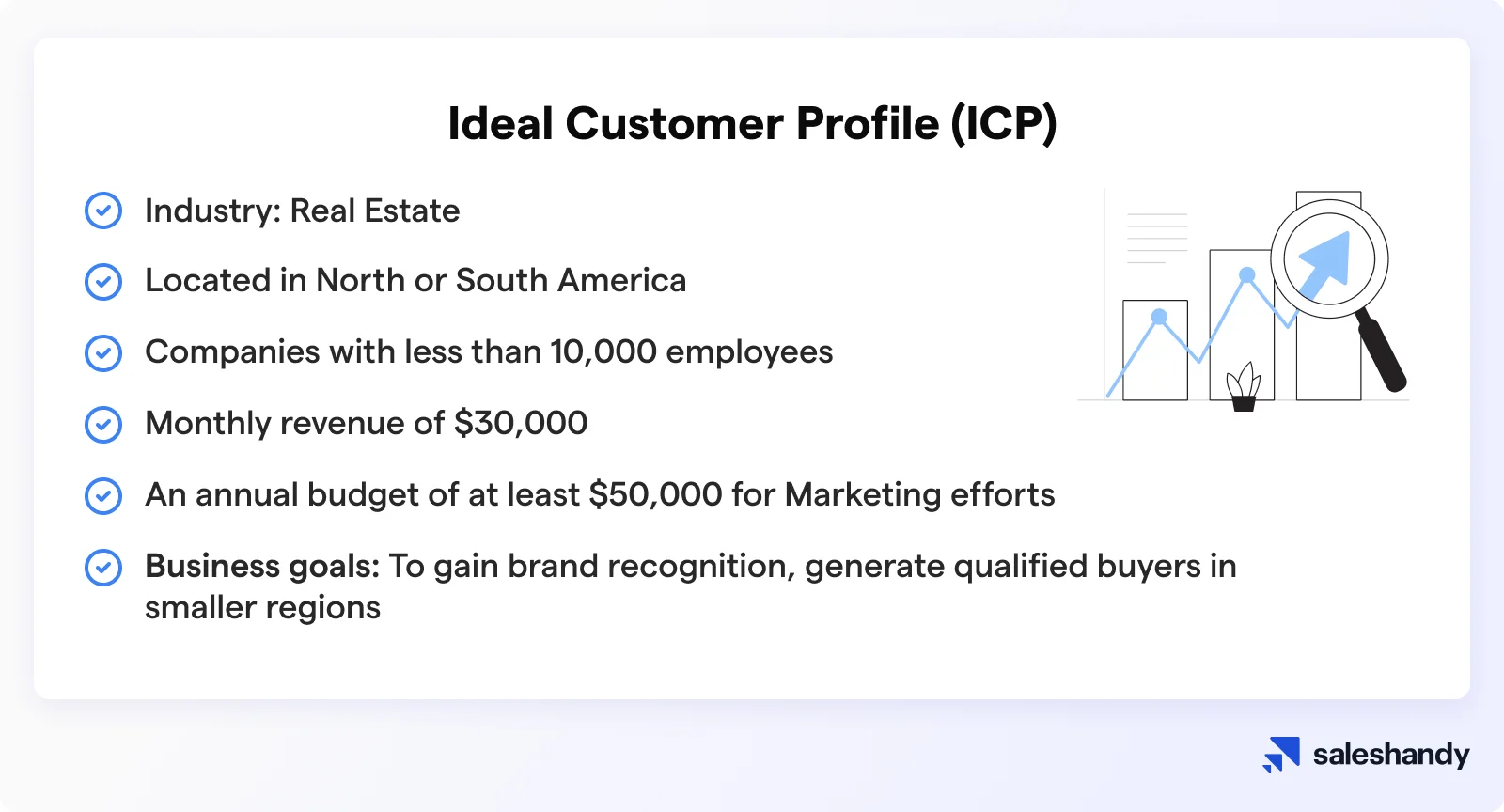
To identify your ideal customer, begin by analyzing your research data. Some characteristics to consider may include:
- Location
- Company size
- Age range
- Annual revenue
- Industry
- Technologies/software utilized
- Department
- Budget
Now that you have identified your target customers and created an ideal customer profile out of it, let us look into some of the best lead-generation techniques that can help you attract your target prospects and generate high-quality leads.
2) Attracting the Prospects & Getting the Lead
When it comes to generating leads for your software development company, there are various outbound and inbound lead-generation strategies that you employ.
The quickest way to get access to verified leads is through a B2B database like Saleshandy’s B2B Lead Finder.
However, we will only focus on the best ones, so let us start with outbound strategies:
Outbound Lead Generation Strategies
Outbound lead generation strategies involve reaching out to potential customers proactively. Some of the most popular outbound lead-generation strategies for software development companies include:
1) Cold Emailing
Cold emailing is an outbound lead-generation strategy that you can use to reach out to your potential customers who have not expressed interest yet but has highly likely chances to convert.
The goal of cold emailing is to introduce your business to your potential customers and to generate their interest in your offerings. Writing cold emails can be the most effective way for software development companies to reach their target audience’s inbox and generate leads.
Here’s how it can help you with your lead-generation efforts:
- Reach a Wider Audience: Cold emailing allows you to reach potential customers who may not have discovered them otherwise. By sending personalized and relevant emails, software development companies can easily capture the attention of potential customers and introduce them to their services.
- Cost-Effective: Cold emailing is a cost-effective lead generation strategy compared to other outbound strategies like cold calling or pay-per-click advertising. It allows you to reach as many prospects as you want at a very minimal cost.
- Targeted Messaging: Cold emailing allows software development companies to customize their messaging and target specific individuals or companies based on their industry, job title, or location. This increases your chances of success & helps you to generate unlimited leads.
Pro Tip: Check out our in-depth guide on how to generate unlimited leads through cold emailing, where we have not only shared a proven framework but also free templates & other resources that you can leverage for your cold email outreach.
2) Cold Calling
Cold calling is a technique used by marketers and/or salespeople to contact individuals that have had no prior contact with their brand or expressed any interest in the product. The aim of cold calling is to persuade prospects to buy your product.
Cold calling is indeed a difficult process as most individuals will resist engaging with a stranger that has called them out of the blue, let alone agree to make a purchase.
However with the right approach, it can help you with your lead generation efforts, here’s how:
- Personalized Approach: Cold calling allows for a personalized approach to each potential customer. A salesperson can tailor their pitch to the customer’s specific needs and pain points, making the call more effective in generating interest.
- Direct Communication: Cold calling allows for direct communication between the salesperson and potential customer, making it easier to build rapport and establish trust. This can lead to a higher conversion rate compared to other strategies that rely on indirect communication.
- Immediate Feedback: Cold calling provides immediate feedback on the effectiveness of the sales pitch. A salesperson can quickly assess whether the potential customer is interested or not and adjust their approach accordingly.
3) LinkedIn Outreach
LinkedIn outreach involves reaching out to your target prospects over LinkedIn, a social media platform for professionals. You can do this by sending direct messages, connection requests, or engaging with their content.
LinkedIn outreach can be a powerful lead-generation tool if you leverage it in the right manner, as it allows you to connect with key decision-makers and other professionals in your target industries.
Here’s how software development companies leverage LinkedIn outreach to generate leads:
- Targeted Prospecting: LinkedIn allows you to search for prospects based on industry, job title, company size, and location. With this, you can focus your outreach efforts on individuals who are more likely to be interested in what you are offering.
- Establishing Authority: LinkedIn is an ideal place for your software development company to establish yourself as an industry leader. By continuously sharing valuable content and engaging with prospects, you can build your reputation and establish trust with your potential customers and ultimately generate leads for your business.
- Personalization: LinkedIn outreach allows companies to personalize their outreach efforts to each individual prospect. This can be done by referencing their company or job title in the outreach message or by mentioning a recent article or post they shared. This personalized outreach approach ultimately helps you attract more leads.
Read more : 20+ Best LinkedIn Cold Message Templates
4) Pay-per-click advertising
Pay-per-click (PPC) advertising can be a highly effective tool for your outbound lead generation, especially when you are using it with a well-designed & well-crafted landing page.
Here’s how PPC advertising can help you with your lead generation efforts:
- Targeted Advertising: PPC advertising allows software development companies to target their ads to specific keywords, geographic locations, and demographics. This ensures that their ads are seen by people who are actively searching for their services, increasing the likelihood of generating quality leads.
- Measurable Results: PPC advertising provides real-time data on the performance of ad campaigns. This means that software development companies can measure their results and adjust their strategy accordingly to optimize their lead generation efforts.
- Quick Results: Unlike other lead generation strategies such as content marketing or SEO, PPC advertising can generate leads quickly. This is especially beneficial for software development companies that need to generate leads quickly to meet their business objectives.
5) Software Showcase
A software showcase is an event or a digital platform that allows software development companies to display and demonstrate their products to potential customers.
Software Showcase can act as a lead-generation tool as it can help you in multiple ways such as lead capture forms, contact information for attendees, etc. This can help you generate high-quality leads and also follow up with potential customers more efficiently.
Here’s how Software Showcase can be an effective tool for outbound lead generation for software development companies:
- Targeted Audience: Software showcases often attract a targeted audience of individuals and companies who are specifically interested in software products and services. This can help you generate high-quality leads that are more likely to convert into paying customers.
- Networking Opportunities: Software showcases also offer excellent networking opportunities, allowing you to connect with other industry professionals and potential customers.
This can help you build relationships and generate leads that may not have been possible otherwise. - Brand Recognition: By participating in software showcases you can build brand recognition and establish your company as a thought leader in the industry.
This can help you generate leads from individuals and companies who are specifically interested in working with reputable and established companies.
So, we’ve covered the best outbound lead generation strategies.
Now, let’s shift our focus to some of the top-performing inbound lead-generation strategies that you can implement.
Inbound Lead Generation Strategies
Inbound lead generation strategies involve attracting potential customers to your business by creating value for those who already know your business.
Some of the most popular inbound lead-generation strategies for software development companies include:
1) Content Marketing
Content marketing can be a highly effective inbound lead-generation strategy for your software development company.
All you need to do is start creating and sharing valuable content for your targeted audience and attract those who are interested in your content towards your products and services.
And here’s how you can do it:
- Establish expertise: Through content marketing, you can showcase your expertise in the software development industry. This can help you with building trust and credibility with your potential customers, which can help you to generate more & more leads.
- Address pain points: By creating content that addresses the common pain points of your potential customers that they are facing, you can attract their attention toward your brand and the solution that you have to offer.
- Lead magnets: By creating valuable, informative resources such as e-books, whitepapers, and case studies, you can offer these as “lead magnets” in exchange for a visitor’s contact information, thereby generating leads for your sales team to follow up with.
2) SEO
SEO which stands for Search Engine Optimization is a process of optimizing a website’s content and structure to improve its visibility and ranking on search engines like Google. SEO is an essential tactic for software development companies looking to generate leads.
By optimizing your website for search engines, you can attract targeted traffic and start generating high-quality leads.
Here’s how SEO can help with your lead-generation efforts:
- Attract Targeted Traffic: SEO can help you attract targeted traffic to your website. By optimizing your website for search engines, you can improve your visibility and ranking in search results, which can lead to more traffic and increase the chances of getting more & more potential leads.
- Value: By creating valuable content that addresses the pain points of your target prospects, you can attract highly targeted traffic to your website and establish yourself as an authority in your industry.
This can lead to increased trust and credibility, which can make visitors more likely to convert into leads. - Lead capture: Your website should be optimized for capturing leads by having clear calls-to-action (CTAs) and contact forms on key pages. By optimizing your website for lead capture, you can convert your website traffic into leads.
3) Referral Marketing
Referral marketing encourages your current customers to refer new customers to your business. It leverages the power of word-of-mouth to attract new customers which makes It one of the effective strategies to generate leads.
As your potential customers are more likely to trust recommendations from people they know and trust i.e. your existing customers…And here’s how it can help you with your lead generation efforts:
- Increased Trust and Credibility: Referrals from existing customers carry more weight than traditional methods of outreach because people are more likely to trust recommendations from friends, family, or colleagues.
By creating a referral program, you can tap into this trust and credibility to attract more and more new leads. - Cost-Effective: Referral marketing can be a cost-effective way to generate leads because you’re not spending money on advertising or other marketing tactics.
Instead, you’re incentivizing your existing customers to spread the word about your business. - Higher Conversion Rates: Referral marketing can lead to higher conversion rates because the leads you generate are often pre-qualified. They’ve already heard about your business from someone they trust, so they’re more likely to be interested in what you have to offer.
4) Social Media Marketing
Social media marketing involves creating and sharing content on various social media platforms to increase brand awareness, drive traffic, and generate leads.
Social media marketing can be a powerful tool for your lead generation efforts as it allows you to reach a large user base of your potential customers where they spend a lot of time & engage with other similar content.
Here’s how social media marketing can help with lead generation:
- Engage with potential customers: With social media marketing, you can directly reach your potential customers & engage with them. By responding to comments and messages, you can build relationships with those who are interested in your brand and products. Which can increase your chances of attracting leads.
- Targeted Efforts: Social media platforms can offer targeted reach for your business that allows you to reach specific audiences based on their interests & behaviors. This can help you reach those who are more likely to be interested in your products or services as they are already interacting with similar social media accounts in your niche.
- Drive traffic to your website: By sharing links to your website content and blog posts on social media, it is highly likely that you can drive traffic to your website and potentially convert those visitors into leads for your business.
5) Webinars & Events
Webinars and events allow you to share your knowledge, expertise, and solutions with your potential customers. It typically involves a live or pre-recorded video presentation, accompanied by various types of interactive sessions.
Software development companies can organize webinars & events for their lead generation. It is a gathering that will help you bring together like-minded people (most probably your ideal target) to share ideas and learn about your products and services.
Here’s how it can help with lead-generation efforts:
- Targeted Audience: When you host a webinar or event, you have the ability to target a specific audience that is interested in the topic you are presenting. This means that you can attract high-quality leads that are more likely to be interested in your products or services.
- Relationship Building: Webinars and events provide an opportunity to build relationships with your target audience. By engaging with them in real time, you can build trust and establish a rapport that can lead to more meaningful interactions in the future.
- Lead Capture: Webinars and events can be used to capture leads by requiring attendees to provide their contact information in order to register. This information can then be used for follow-up marketing efforts.
Now that we have explored some of the effective outbound and inbound lead generation strategies, it’s time to focus on the next step which will help us determine which of the generated leads are of high quality and have a greater likelihood of converting into paying customers.
3) Lead Qualification
Lead qualification is a critical aspect of any successful lead generation strategy. It involves assessing the suitability of a lead based on various criteria to determine whether they are likely to become a valuable customer.
One way to do this is by using a lead scoring system, which involves assigning points based on various factors that indicate the lead’s level of interest in your product/service and their readiness to buy.
The factors that you should consider include:
- Lead’s industry
- Company size
- Job title
- Level of engagement, etc.
By analyzing these factors, you can assign points to each lead to determine their score.
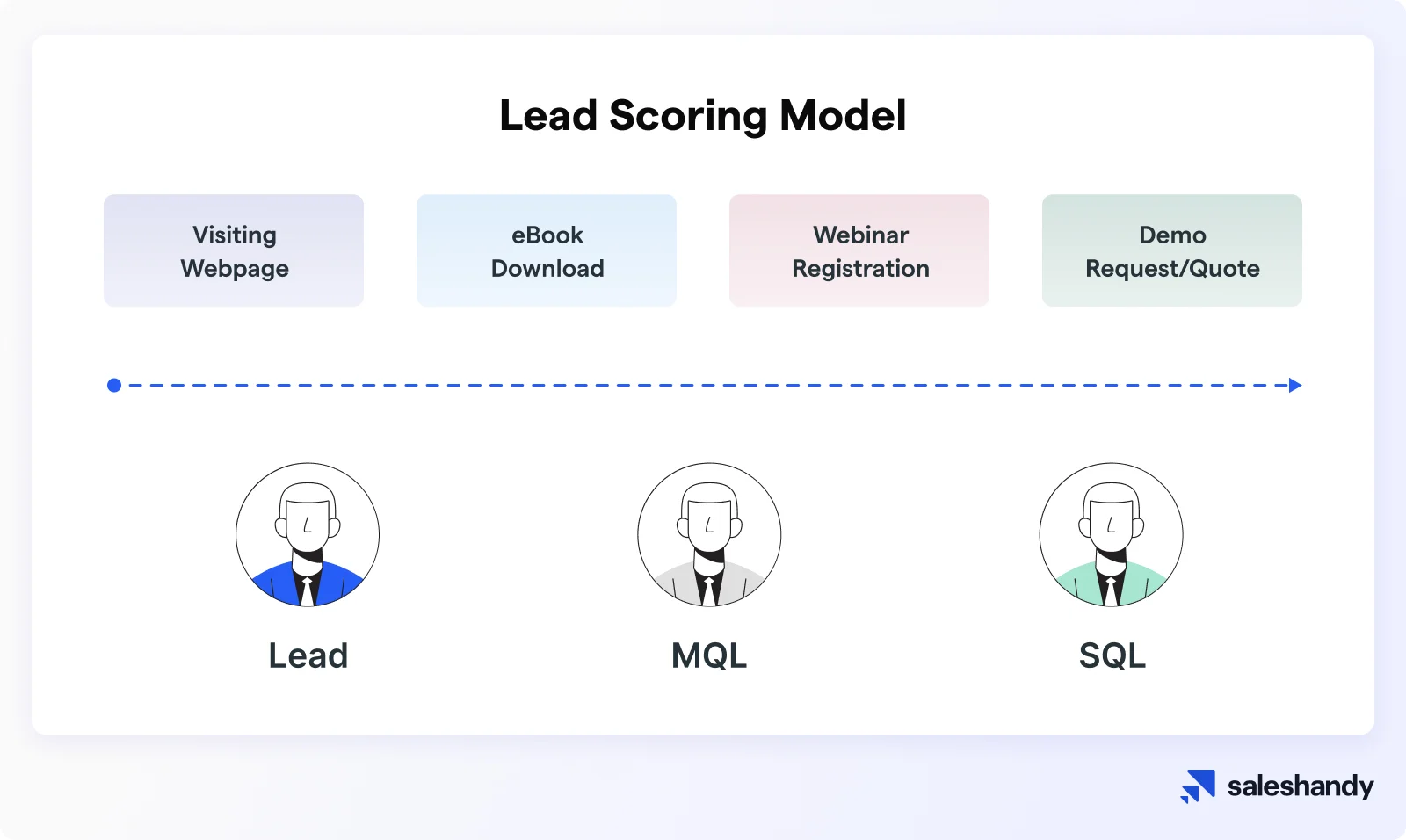
For example:
- The leads that work in industries that are relevant to your services may receive higher scores, as they are more likely to be interested in what you offer.
- Similarly, leads that work for larger companies may receive higher scores, as they may have more significant budgets and greater decision-making power.
- The job title is another critical factor to consider, as decision-makers at senior levels are more likely to have the authority to make purchasing decisions.
Another crucial factor to consider is the lead’s engagement with your content. This may include actions such as downloading whitepapers, attending webinars, and subscribing to your email list.
Leads that have engaged with your content more frequently and recently may receive higher scores, as they are demonstrating a greater level of interest in your services.
Once you have assigned scores to your leads based on these factors, you can determine a threshold score that indicates when a lead is qualified.
- Once a lead reaches this score, you can consider them qualified and move them to the next step in the sales process.
- This may involve passing them on to the sales team, sending them additional content to further nurture the relationship, or setting up a demo or consultation.
So now you know how to attract your prospects and get qualified leads! However, your work is not done yet. In addition to attracting and qualifying leads, it’s essential to nurture them as well. So let’s look into it…
4) Lead Nurturing
Lead nurturing is an essential process in any successful lead generation strategy. Why? It helps you to build a long-term relationship with your prospects and can further help to guide them throughout your buying journey.
It involves providing your potential customers with relevant and valuable information that is not just related to your business but also is a probable solution to their problems at every stage of your sales funnel, which will help you to keep them engaged at all stages and interested in your offerings.
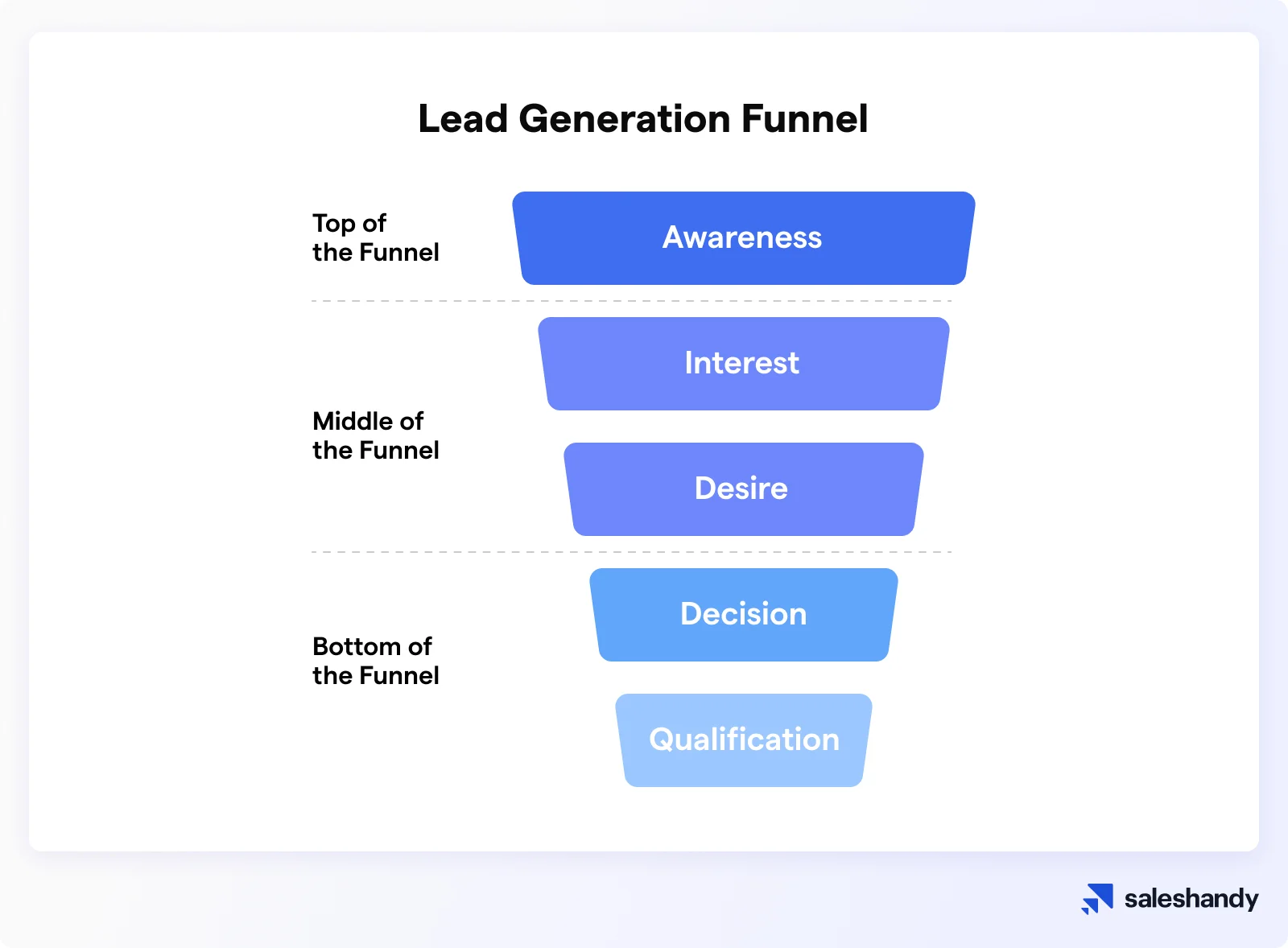
Segmenting your leads based on their behavior, interests, and buying stage is an important part of lead nurturing. Why? This allows you to personalize your messaging and content to their specific needs and interests, making it highly relevant and more engaging.
So when you provide personalized content to your target audience, you demonstrate that you very well understand their needs which can help them solve their problems, which directly or indirectly increases the chances that they will choose YOUR BUSINESS when they are ready to make a purchase related decision.
Apart from the segmentation, using multiple channels to reach out to your leads is also very much crucial for building relationships with them. If you use multiple channels to reach your target prospects, you increase the likelihood that they will see your content and engage with your business. Many of your target prospects may be on one channel and not on another, so by using multiple channels, you increase your chances.
This can also help you to capture more information about related to your leads, such as their preferred channel of communication, their interests, etc.
As you focus on attracting qualified leads and initiating the nurturing process, it is crucial to measure and analyze your results. This step is often overlooked but essential in ensuring your success. So let’s see how you can do it.
5) Measuring and Analyzing Your Results
Measuring and analyzing your lead generation efforts is essential to ensure that you are achieving your desired results and making the most out of your marketing budget. Here are key steps that you can take to measure and analyze your ongoing lead-generation tasks:
Analyze lead sources:
It’s important to analyze the sources of your leads, such as cold emailing, social media, or paid advertising. This will help you determine which channels are most effective in generating high-quality leads and where you should focus your marketing efforts.
Measure cost per lead:
Calculating your cost per lead is another crucial thing to measure and analyze your lead generation efforts. This involves dividing your marketing spend by the number of leads generated, which will help you understand the ROI of your marketing efforts.
Monitor lead conversions:
Measuring Lead Conversions is a critical thing for you. This involves tracking the number of leads generated from your lead generation efforts and analyzing their quality and conversion rates.
Use A/B testing:
Finally, A/B testing is an effective way to measure the effectiveness of your marketing campaigns. This involves testing different variations of your cold email outreach, landing pages, and other marketing elements to determine which one performs best in generating leads.
Note: If you are choosing cold email for your lead generation efforts, Saleshandy provides you with not just A-B Testing but A to Z testing of your outreach campaign.
It is not enough to analyze and measure, you must also take action. Here comes the most crucial part…Optimizing!
6) Optimizing your Lead Generation Efforts
Lead generation efforts are not a one-time thing, but an ongoing process. Continuously monitor your results and refine your strategies to keep up with changes in your industry and target audience’s behavior.
Using the insights gained from analysis and testing, businesses can optimize and refine their lead generation strategy. This could involve tweaking messaging, adjusting targeting, or increasing the budget for high-performing strategies.
For example, if a particular strategy is generating a higher number of leads, you may consider allocating more resources to that strategy or exploring other similar strategies that can yield similar results or even better results for your business.
Now that you know how to generate qualified leads, let’s take a look at some of the best tools that you can use…
5 Best Lead Generation Tools for Software Development Companies
1) Saleshandy (For Cold Email Lead Generation)

Saleshandy provides you with powerful lead-generation solutions that save time and effort in finding relevant leads and sending personalized emails at scale.
With the B2B Lead Finder, you can get access to a database of over 700 million
With Saleshandy, you can easily personalize your cold emails with dynamic fields, such as recipient name, company, and job title, to increase engagement and response rates.
But that’s not all. You can also keep a track of all responses in a centralized place and at the same time reply to them on the go! The automated follow-up feature enables you to nurture your leads by sending the subsequent email at the most opportune time.
2) SeedProd (For Landing Page)
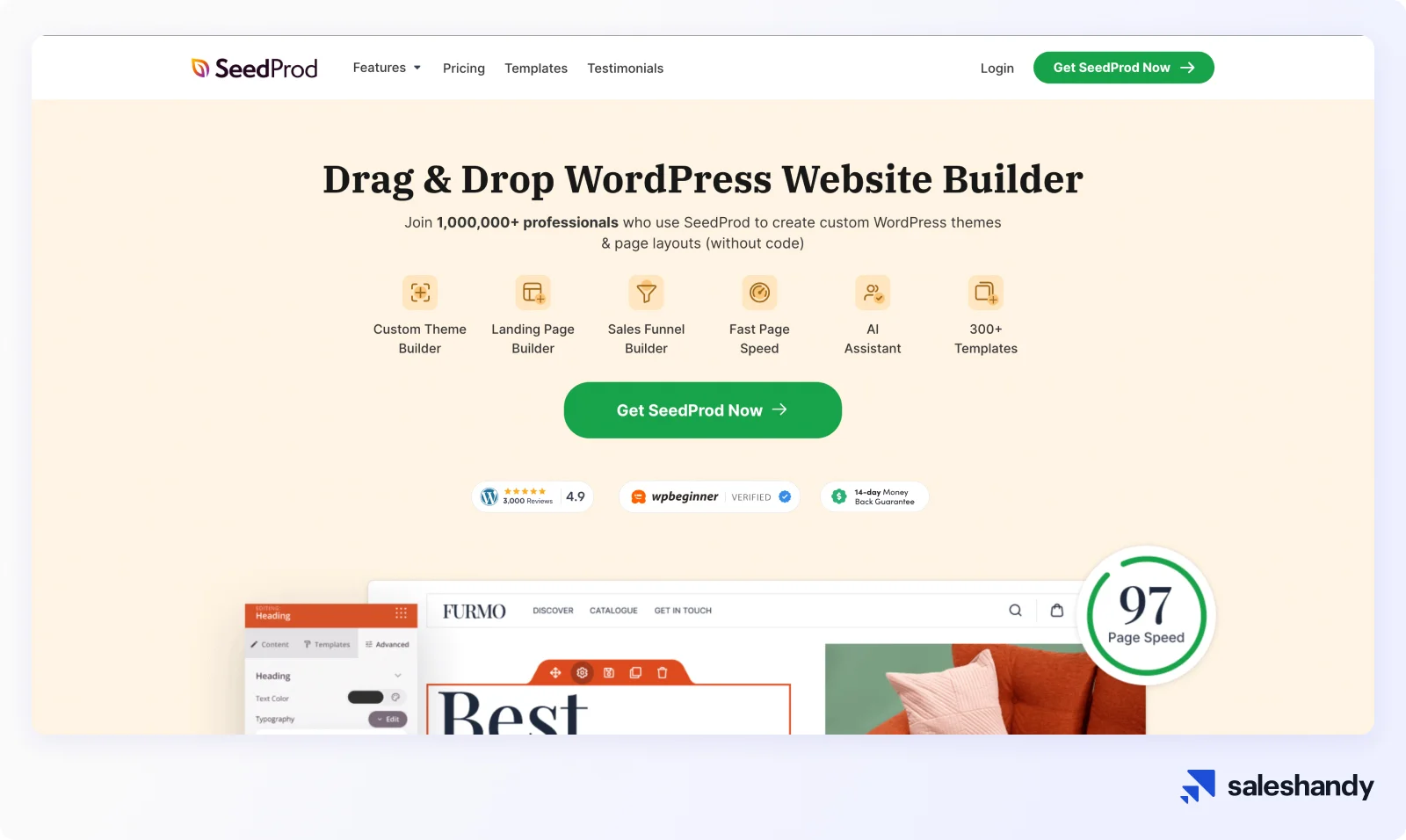
SeedProd has secured a spot on the list of top lead generation tools, thanks to its status as the foremost landing page builder for WordPress. Its easy-to-use drag-and-drop builder enables users to construct stunning landing pages that are ideal for capturing leads, whether they’re intended for sales, maintenance, webinar, or opt-in campaigns.
Furthermore, with over 150 landing page templates, users don’t have to fret over creating responsive, mobile-ready pages as the challenging work has already been completed.
3) OptinMonster (For Lead Capturing)
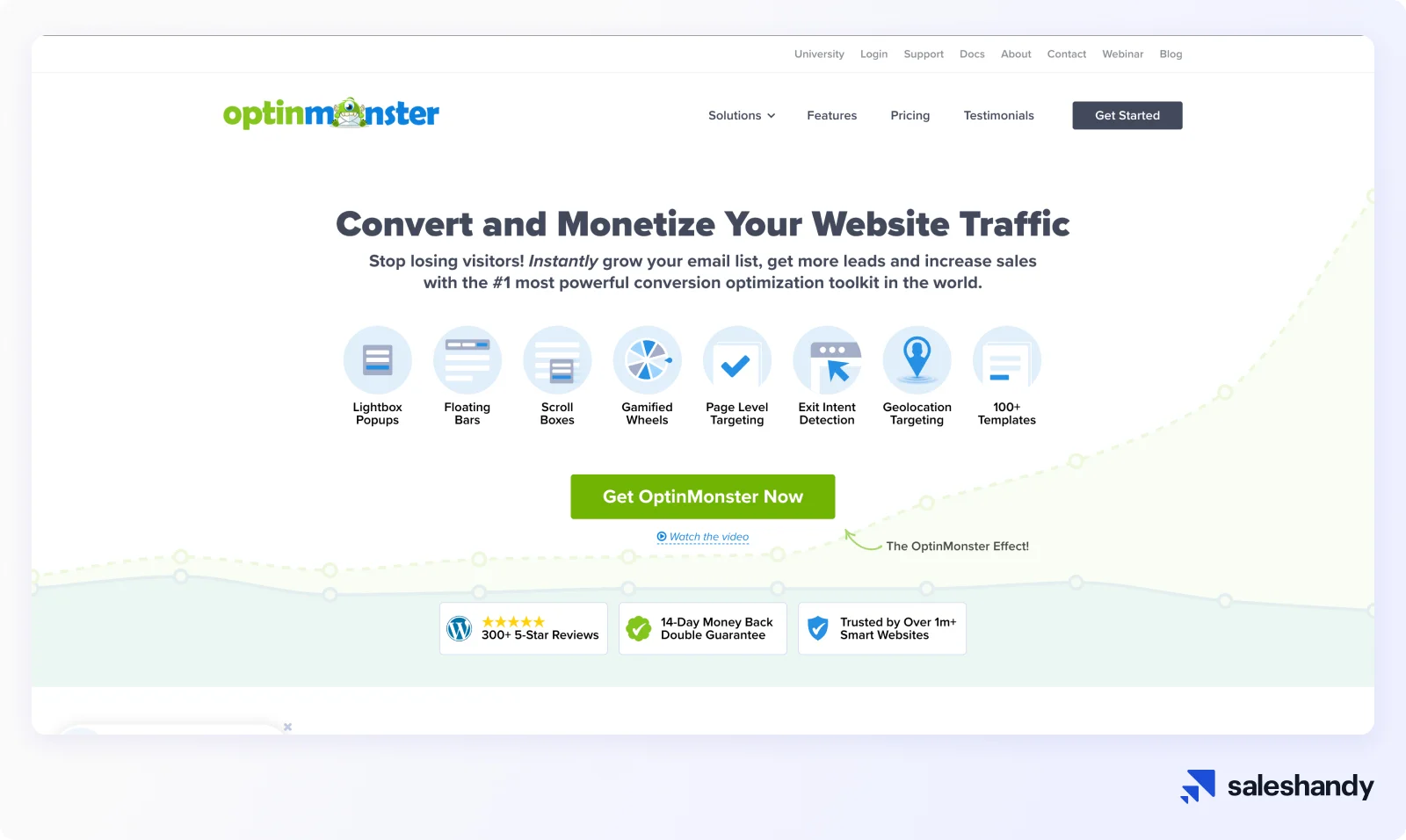
OptinMonster is a top-notch lead generation tool that simplifies the process of converting your website visitors into potential customers.
Regardless of the type of website you operate or the type of leads you seek, OptinMonster provides tailor-made solutions for creating campaigns that gather high-quality leads to suit your specific requirements.
With OptinMonster, you have the freedom to exercise your creativity and design captivating on-site lead generation campaigns such as popups, slide-in windows, and interactive spin-to-win wheels. And the best part? You can achieve it all through a user-friendly and uncomplicated builder, even if you’re new to the platform.
4) Adobe Marketo Engage (For Customer Engagement)
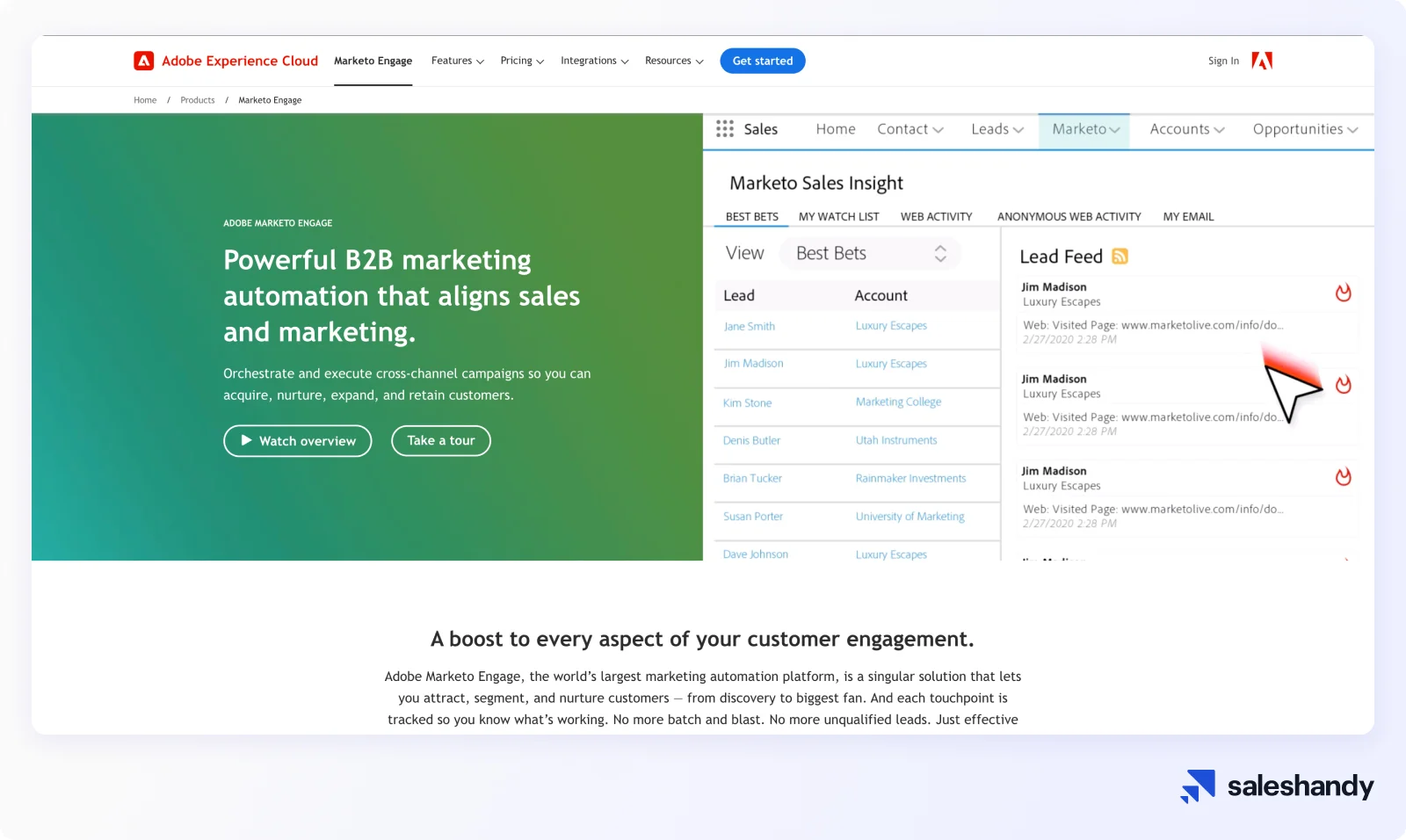
Adobe Marketo Engage leverages behavior tracking to assist in pinpointing ideal customers for engagement purposes. Its cross-channel engagement capability allows for seamless 1-to-1 communication with potential customers across both online and offline channels.
Additionally, Adobe Marketo Engage offers personalized user experiences on your website, catering even to anonymous visitors, leading to increased lead generation and improved sales lead quality.
Read More: 11 Best AI Lead Generation Tools In 2024
5) Salesforce (For Sales & Lead Management)
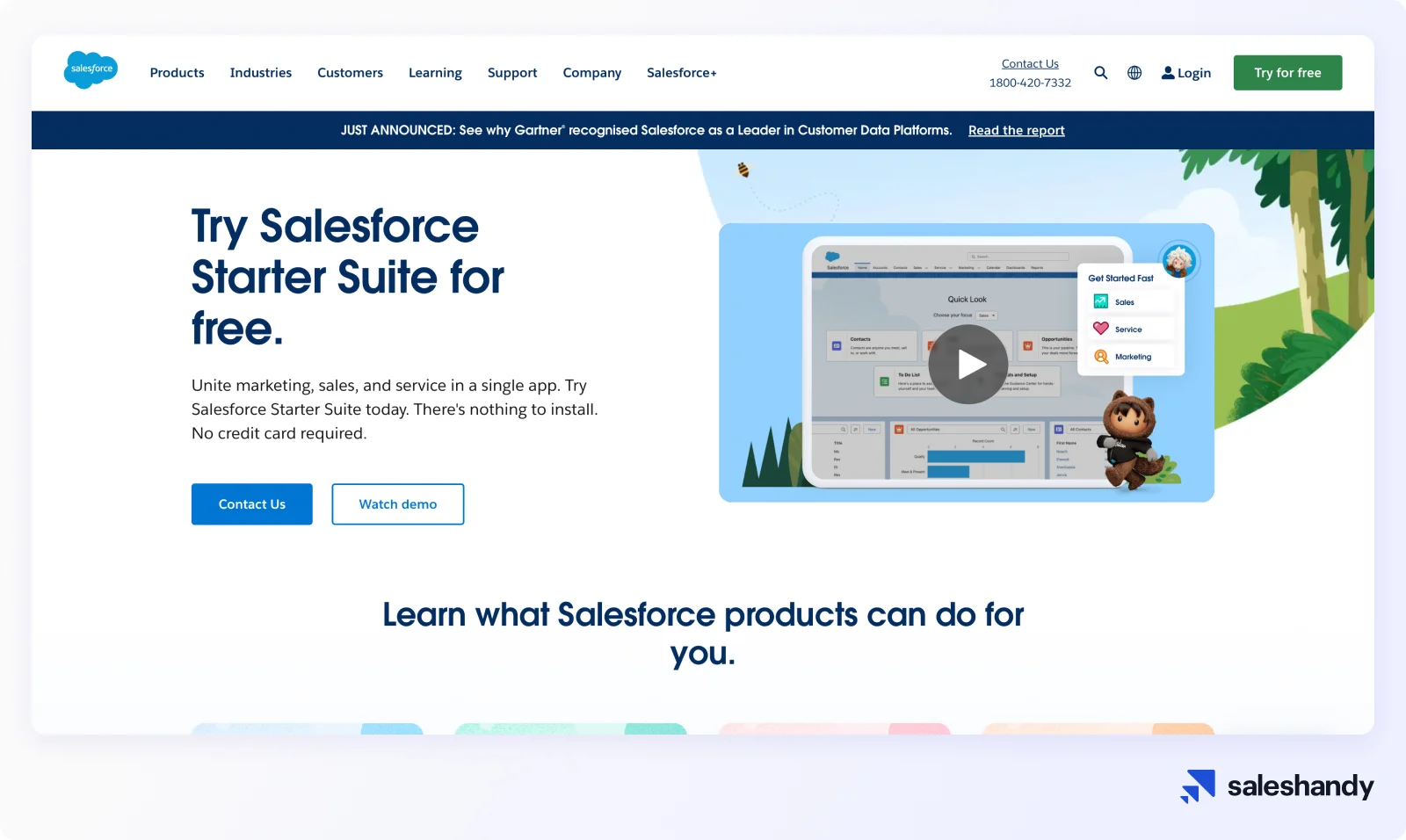
Salesforce is a premier sales and lead management software that follows the principle of working smarter, not harder. It offers an array of tools that aid in lead generation, customer management, sales team coordination, and other functions, making it a leading sales lead generation tool.
Additionally, it seamlessly integrates with various sales and marketing software, thereby enabling businesses to enhance their sales performance and deliver superior customer service.
Conclusion
Lead generation is a critical aspect of any software development company’s success. By implementing the strategies discussed in this article, you can increase your chances of gaining new clients and growing your business.
Don’t forget that generating leads is just the first step. You need to have a solid sales process in place to ensure that you are effectively converting your leads into marketing qualified leads (MQLS), MQLs into sales qualified leads (SQLs), and ultimately into paying customers.
By mastering the art of lead generation and sales, you can set your software company on a path to long-term success.
But wait! If you are interested in supercharging your cold email lead generation effort, you should definitely try Saleshandy! It automates your entire lead generation outreach effort from start to end. And you just keep counting money…


